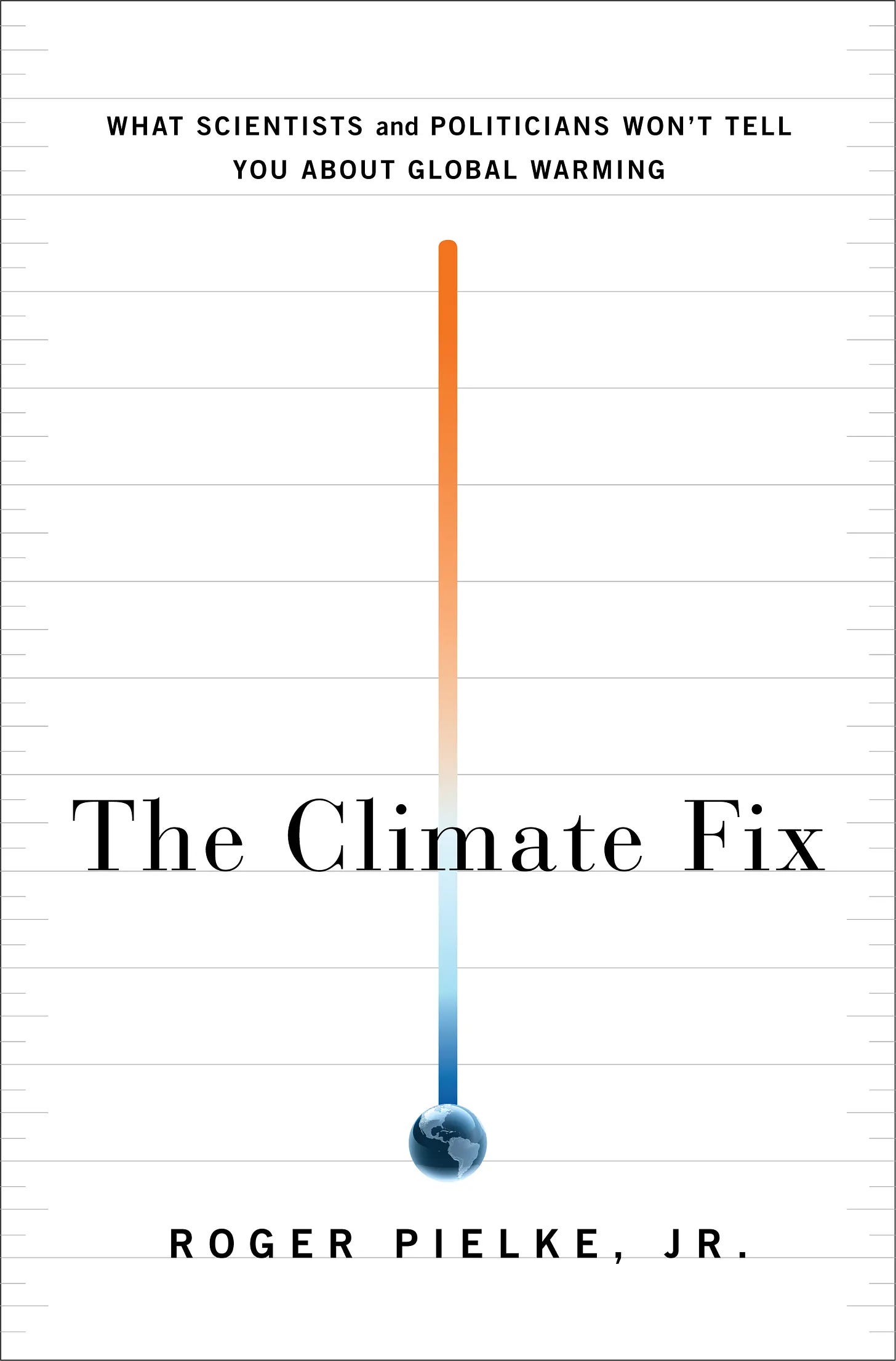This post shares Chapter 3 my book, The Climate Fix. Here are links to the Chapters shared so far:
Chapter 1 — Dinner Table Climate Science
Chapter 2 — What We Know for Sure, But Just Ain’t So
Here is how Chapter 3 starts, with a link below to the full PDF.
The Climate Fix, Chapter 3, Decarbonization of the Global Economy
As explained in Chapter 1, the accumulation of carbon dioxide in the atmosphere influences the climate, changes the chemistry of the oceans, and influences the growth of vegetation. All of these effects lead to further effects in the earth system. Some of these effects may be predictable, and some may not; some could be benign, or even beneficial, but others might be far less acceptable. Much attention in the field of climate science in recent decades has been focused on trying to gain a clearer view of the future impacts of accumulating carbon dioxide (and other greenhouse gases, as well as other natural and human influences). The literature on this topic is so vast that one could easily cherry-pick a few studies suggesting that the impacts may be benign or, in contrast, that those impacts may be catastrophic. Science cannot presently adjudicate between these possibilities, or even give reliable odds on particular outcomes, leaving what Steve Schneider calls a “lingering frustration” (see Chapter 1). Many, if not most, scientists believe that the impacts will be on balance negative and significant.
For some people the mere fact that significant negative impacts are possible is all they need to know to support policies focused on accelerating decarbonization of the global economy. Undoubtedly in some cases, the issue of climate change simply adds weight to actions that they would support for other reasons, such as expanding alternative energy or redistributing wealth. But for others the science by itself provides an insufficient basis for action, especially costly and aggressive action. Here as well science is filtered through preexisting views and commitments. Climate change is a bit like a policy inkblot on which people map onto the issue their hopes and values associated with their vision for what a better world would look like. In such a circumstance it should not be a surprise that scientific information cannot lead to political consensus.
Even so, the political battle over climate change has been waged through science. Advocates for action typically seek to compel the recalcitrant by offering up ever more certain scenarios of an apocalyptic future. Those seeking to prevent action highlight the uncertainties in climate science. Some of those on each side of this debate have misrepresented climate science in political debates. For those advocating action, this strategy has failed; instead, the strategy has contributed to a problematic politicization of climate science and increased opposition to action. As argued in more depth in Chapter 7, waging a political battle through science tilts the playing field in the direction of those opposing action and threatens the integrity of climate science as well.
But science need not carry all of the weight of advocacy for action to accelerate decarbonization of the global economy, as there are other, far less controversial, reasons that decarbonization makes sense. Together these other reasons may not be sufficient to justify decarbonization to levels implied by very low targets for stabilizing concentrations of carbon dioxide, but they are certainly plenty strong enough to motivate the first steps on that path, which so far have been very difficult to take. And after the first steps are taken, the ones that follow might then come a bit easier.
The World Needs Vastly More Energy
Energy experts use a dizzying array of units and jargon to talk about energy. In this chapter and the next I use some back-of-the-envelope approximations to help make better intuitive sense of energy and its relationship with carbon dioxide emissions. . .
Last chance to get in on the 10,000 Subscriber special!




